the new new thing
description: a term often used to describe a recent innovation or trend that is considered a breakthrough or revolutionary in some way.
61 results

The New New Thing: A Silicon Valley Story
by
Michael Lewis
Published 29 Sep 1999
For that matter, there is no name for what he's looking for, which, typically, is a technology, or an idea, on the cusp of commercial viability. The new new thing. It's easier to say what the new new thing is not than to say what it is. It is not necessarily a new invention. It is not even necessarily a new ideamost everything has been considered by someone, at some point. The new new thing is a notion that is poised to be taken seriously in the marketplace. It's the idea that is a tiny push away from general acceptance and, when it gets that push, will change the world. The searcher for the new new thing conforms to no well-established idea of what people should do for a living. He gropes. Finding the new new thing is as much a matter of timing as of technical or financial aptitude, though both of those qualities help.
…
cover title: author: publisher: isbn10 | asin: print isbn13: ebook isbn13: language: subject publication date: lcc: ddc: subject: The New New Thing : A Silicon Valley Story Lewis, Michael. W. W. Norton & Company, Inc. 0393048136 9780393048131 9780585224183 English Clark, Jim,--1944- , Businessmen--United States-Biography, Computer software industry--United States-History. 1999 HD9696.63L49 2000eb 338.4/700 Clark, Jim,--1944- , Businessmen--United States-Biography, Computer software industry--United States-History. cover Page 1 The New New Thing Page 3 Also by Michael Lewis Liar's Poker The Money Culture Pacific Rift Trail Fever Page 4 Page 5 The New New Thing A Silicon Valley Story Michael Lewis Page 6 Copyright © 2000 by Michael Lewis All rights reserved Printed in the United States of America First Edition For information about permission to reproduce selections from this book, write to Permissions, W.
…
After he'd drawn his little diagram of the world's largest market with himself in the middle, he was finished. Other people could take care of the messy details of turning Healtheon into a giant corporation. That's what he always said just after he had disgorged the new new thing, and the new new thing became, simply, the new thing. He was not finished, however. The one hard rule in Jim Clark's life was that he must always pursue the new new thing. Three multibillion-dollar companies was not enough for one lifetime. Once when I'd asked him how he planned to convert his wealth to leisure, he said, "You've got to figure out something that is out of the path of Microsoft.
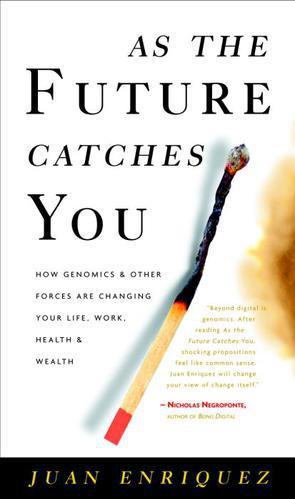
As the Future Catches You: How Genomics & Other Forces Are Changing Your Work, Health & Wealth
by
Juan Enriquez
Published 15 Feb 2001
Because the speed of change is so rapid, it is sometimes easier to follow the day-to-day changes in the digital world through magazines rather than books. I find Wired, Fast Company, and Red Herring useful ways to follow the intersection of technology and business. 6. Michael Lewis describes the uncertainty and fragility of big business beautifully in The New New Thing: A Silicon Valley Story (New York: W.W. Norton, 1999). Chapter VI: Genetics … the Next Dominant Language 1. Richard Lewontin is a source of never-ending smart and wry observations: See It Ain’t Necessarily So: The Dream of the Human Genome and Other Illusions (New York: NYRB, 2000). 2.
…
at www.sims.berkeley.edu/how-much-info/print.html. Meanwhile, a series of Web companies are trying to catalog all global digital knowledge. 6. One of the leading authorities in the field is Nagoya University’s Makoto Fujita. 7. You can read a great description of Clark and Silicon Valley in Michael Lewis’ The New New Thing. 8. There is a really interesting article in Science that outlines the initial possibilities. James R. Heath et al., “A Defect Tolerant Computer Architecture: Opportunities for Nanotechnology,” 280 (June 12, 1998): 1716. 9. www.beowulf.org. 10. You can see what is discovered daily by looking at the Protein Data Bank: www.rcsb.org/pdb/index.html. 11.

Coach: Lessons on the Game of Life
by
Michael Lewis
Published 16 Apr 2008
COACH ALSO BY MICHAEL LEWIS Flash Boys Boomerang The Big Short Home Game The Blind Side Moneyball Next The New New Thing Losers Pacific Rift The Money Culture Liar's Poker EDITED BY MICHAEL LEWIS Panic COACH LESSONS ON THE GAME OF LIFE MICHAEL LEWIS W. W. NORTON & COMPANY New York London Copyright © 2005 by Michael Lewis Copyright © 2005 by Tabitha Soren All rights reserved For information about permission to reproduce selections from this book, write to Permissions, W. W. Norton & Company, Inc., 500 Fifth Avenue, New York, NY 10110 Library of Congress Cataloging-in-Publication Data Lewis, Michael (Michael M.)

Money: The True Story of a Made-Up Thing
by
Jacob Goldstein
Published 14 Aug 2020
In the first months of 1720 he made it illegal to possess large amounts of gold or silver coins. Suddenly everybody had lots of new gold and silver jewelry. So Law made it illegal to produce any gold object bigger than one ounce, except for crosses and ceremonial chalices. This prompted an immediate outbreak of piety in Paris; big gold crosses were the new new thing. Law banned big gold crosses. As the jewelers were getting rich, Law was starting to lose his grip. He pushed through a series of measures that required people to use paper money for all large purchases. Then he said that, by the end of the year, people would no longer be able to exchange their banknotes for gold and silver.
…
The giant corporations would spend millions of dollars in their quest to create proprietary digital cash. The radical programmers would work for free, often in their spare time, and would give their code away to anyone who wanted it. The corporations would ultimately fail; the radical programmers would succeed. When Digital Cash Was the New New Thing In 1989, after a decade in academia, David Chaum decided to save privacy or get rich trying. He took the patents he’d accumulated over the previous decade (“a device which will assist in the performance of a financial transaction, yet secure the transactions details against covert inspection”) and started a company called DigiCash.
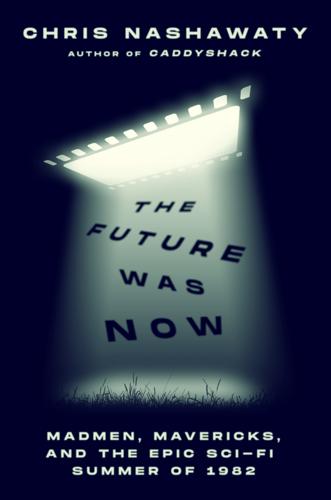
The Future Was Now: Madmen, Mavericks, and the Epic Sci-Fi Summer Of 1982
by
Chris Nashawaty
And its massive success was even more surprising because it belonged squarely to a genre that had always been dismissed by Hollywood as either box office poison or corny kids’ stuff. Seemingly overnight, it felt as if the conventional wisdom of the industry had never been more out of step and off base. Science fiction had all of a sudden become the new New Thing. By the tail end of the ’70s, Hollywood would look very different from how it does today. Almost all the major studios’ corner offices were still occupied by graying executives, a generation that was still clinging to outdated traditions and operating on obsolete business models. These men—and they were all men—were decades older than Lucas and downright geriatric compared to the director’s legions of evangelical young fans.
…
Again, top-tier celebrities turned out for what was being talked about as a zeitgeist movie featuring someone named Arnold Somethingorother, who simply had to be seen to be believed. Emissaries from the worlds of highbrow (Tom Wolfe), middlebrow (James Taylor and Carly Simon), and lowbrow (Deep Throat star Harry Reems) all came to witness and be a part of the new New Thing. As a documentary, Pumping Iron delivered exactly what the best documentaries do. It initiated an unsuspecting audience into a world they knew next to nothing about before the lights dimmed. In this case, a world of sweat, self-obsession, pain, and ecstasy. But it also showed its audience a different side to Schwarzenegger than just a stoic Austrian muscleman.
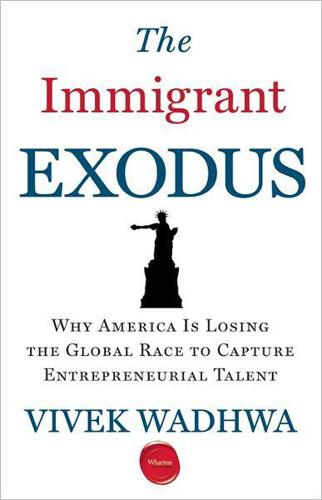
The Immigrant Exodus: Why America Is Losing the Global Race to Capture Entrepreneurial Talent
by
Vivek Wadhwa
Published 1 Oct 2012
Valley insiders joked that IC engineers—meaning “Indian and Chinese” rather than “integrated circuit” (which is commonly abbreviated as IC)—built the region’s tech industry. Silicon Valley legend and former Stanford engineering professor James Clark (who co-founded Netscape and later WebMD) famously sung the praises of Indian engineers in the pop-culture version of Silicon Valley history and the Internet in Michael Lewis’s book The New New Thing. Few doubted that these immigrant engineers had become significant contributors to the rapid growth and cycle of innovation of Silicon Valley. But how much of a contribution had they made? Using a combination of US Census data and interviews with 175 immigrant entrepreneurs, AnnaLee Saxenian arrived at some surprising conclusions in the report “Silicon Valley’s New Immigrant Entrepreneurs,” published in 1999.
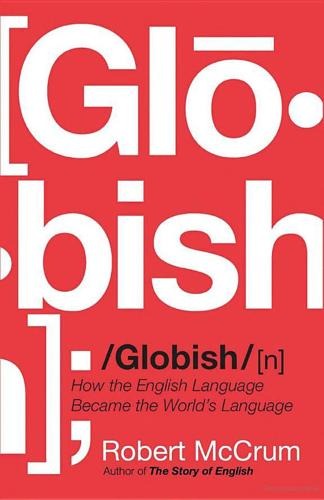
Globish: How the English Language Became the World's Language
by
Robert McCrum
Published 24 May 2010
Friedman, The World is Flat: The Globalized World in the Twenty-First Century (London, 2005), p. 53. 232 In the next two decades: Zakaria, The Post-American World, p. 20. 234 ‘the Internet boom triggered’: Michael Lewis, The New New Thing (New York,1999), p. 2 235 called it ‘an abstract’: quoted in Friedman, op. cit., p. 60 235 Two weeks after Netscape: see Michael Lewis, The New New Thing (New York, 1999). 235 the next Californian Gold Rush: see John Naughton, A Brief History of the Future: The Origins of the Internet (London, 1999). 235 ‘a whole new global platform for collaboration’: Friedman, The World is Flat, p. 91. 237 Anglophile Latin Americans: Allen Guttmann, Sports: The First Five Millennia (Amherst, Mass., 2004). 237 the Superbowl and the World Cup: Franklin Foer, How Soccer Explains the World (London, 2004). 237 The international dimension is comparatively new: David Goldblatt, The Ball is Round, (London, 2006), p. 681. 238 a dreadful anthem: David Goldblatt, The Ball is Round: A Global History of Football (London, 2006), p. 840. 239 ‘You like muffin?’
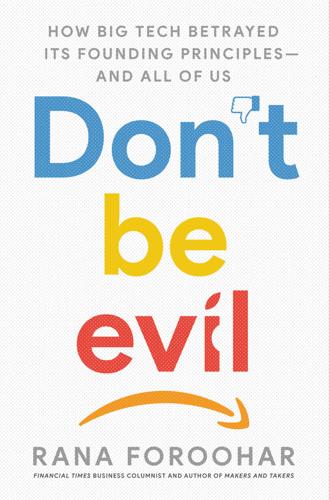
Don't Be Evil: How Big Tech Betrayed Its Founding Principles--And All of US
by
Rana Foroohar
Published 5 Nov 2019
His research shows that while it’s been declining for decades now, it took a particularly sharp plunge in the mid-2000s, which is when Big Tech really boomed.49 While there are many reasons for the trend—from demographics to mobility to immigration—many economists feel that the rise of a technologically driven superstar economy, in which a few large players have taken an increasing share of the economic pie over that time, is a big part of the story. According to the Roosevelt Institute, “Markets are now more concentrated and less competitive than at any point since the Gilded Age.”50 And, despite Silicon Valley’s reputation for cranking out the New New Thing, nothing truly transformative has come out of the biggest technology firms in a decade or so; even Apple, a brand synonymous with innovation, hasn’t released a new groundbreaking product since the iPad in 2010, opting instead to simply add new bells and whistles to existing product lines.51 So where are the new innovators of today?
…
Kim was dubbed the “Madonna of Silicon Valley,” named one of Time magazine’s twenty-five most influential Americans on the Internet, and even appeared on the cover of Fortune. Silicon Valley was a far more playful place back then, before the big money hit, and I was psyched to attend Polese’s launch party for her new company, Marimba. I remember that it was full of interesting, open, energetic, and unpretentious people who seemed genuinely excited about creating the New New Thing. It was mostly guys starting the businesses back then (as it is now); Polese was one of the first women to break into the boys’ club of Silicon Valley, an early prototype, as it were, of more recognizable names such as Marissa Mayer, then the Yahoo CEO, and more recently Facebook’s Sheryl Sandberg, the queen to Zuckerberg’s king.

Home Game: An Accidental Guide to Fatherhood
by
Michael Lewis
Published 1 Jan 2009
HOME GAME BOOKS BY MICHAEL LEWIS Liar’s Poker The Money Culture Pacific Rift Losers The New New Thing Next Moneyball The Blind Side Coach EDITED BY MICHAEL LEWIS Panic HOME GAME An Accidental Guide to Fatherhood MICHAEL LEWIS W. W. Norton & Company New York • London Copyright © 2009 by Michael Lewis All rights reserved For information about permission to reproduce selections from this book, write to Permissions, W. W. Norton & Company, Inc., 500 Fifth Avenue, New York, NY 10110 Library of Congress Cataloging-in-Publication Data Lewis, Michael (Michael M.)
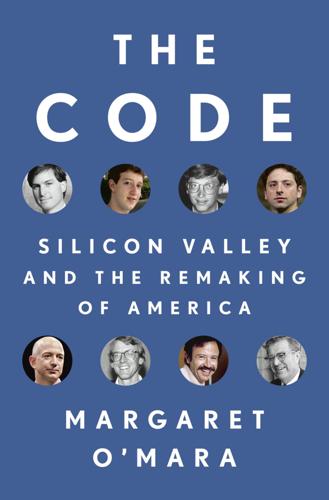
The Code: Silicon Valley and the Remaking of America
by
Margaret O'Mara
Published 8 Jul 2019
On America Online and the dial-up networking era, see Kara Swisher, AOL.com (1998); on AOL’s merger with Time Warner and the dot-com euphoria that accompanied it, see Swisher’s aptly titled There Must Be a Pony in Here Somewhere (2003). Michael Lewis tells the story of Netscape and the irrepressible Jim Clark in The New New Thing (2000). The rise of a new generation of companies from the ashes of the dot-com bust is the subject of Sarah Lacy, Once You’re Lucky, Twice You’re Good (2008). John Battelle explores the technologies and technologists behind the first wave of search engines, and Google’s rise above them all, in The Search (2005).
…
Michael Schrage, “Nation’s High-Tech Engine Fueled by Venture Capital,” The Washington Post, May 20, 1984, G1; Udayan Gupta, Done Deals: Venture Capitalists Tell Their Stories (Cambridge, Mass.: Harvard Business School Press, 2000), 374–5; Regis McKenna, interview with the author, May 31, 2016. 4. Michael Lewis, The New New Thing: A Silicon Valley Story (New York: W.W. Norton, 1999). 5. Gupta, Done Deals, 380. 6. Marc Andreessen interviewed by David K. Allison, Computerworld Honors Program Archives, June 1995, Mountain View, Calif. 7. David Bank, “Why Sun Thinks Hot Java Will Give You a Lift,” San Jose Mercury News, March 23, 1995, 1A; Karen Southwick, High Noon: The Inside Story of Scott McNealy and the Rise of Sun Microsystems (New York: Wiley, 1999), 131. 8.
…
Stiglitz, “The Roaring Nineties,” The Atlantic 290, no. 3 (October 2002): 75–89; Sebastian Mallaby, The Man Who Knew: The Life and Times of Alan Greenspan (New York: Bloomsbury, 2016). 25. David Einstein, “Netscape Mania Sends Stock Soaring,” The San Francisco Chronicle, August 10, 1995, D1; Lewis, The New New Thing, 85. 26. Rory J. O’Connor, “Microsoft Previews On-Line Service,” San Jose Mercury News, November 15, 1994, D1. 27. Saul Hansell, “Flights of Fancy in Internet Stocks,” The New York Times, November 22, 1998, B7; Patrick McGeehan, “Research Redux: Morgan Prints a Sleeper,” The Wall Street Journal, March 20, 1996, C1. 28.

Hooked: How to Build Habit-Forming Products
by
Nir Eyal
Published 26 Dec 2013
Platforms like YouTube, Facebook, Pinterest, and Twitter all leverage user-generated content to provide visitors with a never-ending stream of newness. Naturally, even sites utilizing infinite variability are not guaranteed to hold on to users forever. Eventually—to borrow from the title of Michael Lewis’s 1999 book about the dot-com boom in Silicon Valley—the “new new thing” comes along and consumers migrate to it for the reasons discussed in earlier chapters. However, products utilizing infinite variability stand a better chance of holding on to users’ attention, while those with finite variability must constantly reinvent themselves just to keep pace. Which Rewards Should You Offer?
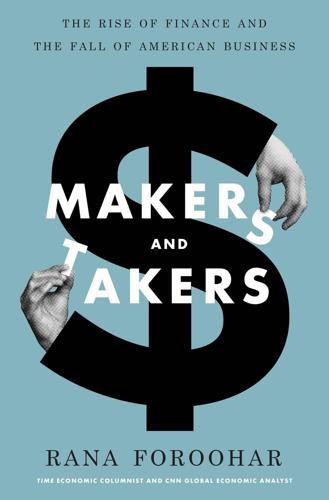
Makers and Takers: The Rise of Finance and the Fall of American Business
by
Rana Foroohar
Published 16 May 2016
And that’s a shame, because a 2015 survey of hundreds of high-level financial professionals found that more than a third had witnessed instances of malfeasance at their own firms and 38 percent disagreed that the industry puts a client’s best interests first.69 THE THEATER OF FINANCIALIZATION Of course, there are other theories about why financialization occurs. Nobel Prize winner Robert Shiller has described the “irrational exuberance” that he believes is a natural human tendency. The fact that we go repeatedly from boom to bust throughout history, moving like lemmings toward the New New Thing—be it tulips or collateralized debt obligations (CDOs)—points to the idea that there are strong psychological forces at work. (The neuroscience of traders’ brains, which respond to deal making similarly to how addicts’ brains respond to cocaine, is in itself a fascinating area of scholarly inquiry.)70 Other academics, like University of Michigan scholar Gerald Davis, focus on the importance of new management theories such as our notion of shareholder value that puts the investor before everyone and everything else in society, including customers, employees, and the public good.71 The changes in the financial system have gone hand in hand with changes in business culture.
…
Altogether, it has shelled out some $138 billion on share buybacks and dividend payments from 2000 to 2014, while spending only $59 billion on its own capital expenditures (along with $32 billion on acquisitions).36 Basically, IBM, like so many companies in our taker economy, is using a lot more cash to please investors than to discover the New New Thing. There are those who would argue that $59 billion isn’t small change. True enough; yet the mercurial nature of the tech business makes it imperative for companies like Apple and IBM, which depend on innovation for growth, to save as much as possible in order to stay ahead of unexpected competitors, rather than disgorging all their free cash to investors.

The Little Book of Hedge Funds
by
Anthony Scaramucci
Published 30 Apr 2012
Hugo Lindgre, “Long-Short Story Short,” New York Magazine, April 9, 2007. 3. Sebastian Mallaby, More Money Than God: Hedge Funds and the Making of a New Elite (New York: The Penguin Press, 2010). 4. Daniel A. Strachman, Getting Started in Hedge Funds, 3rd ed. (Hoboken, NJ: John Wiley & Sons, 2011). 5. Michael Lewis, The New New Thing: A Silicon Valley Story (New York: W.W. Norton, 1999). 6. Gregory Zuckerman, The Greatest Trade Ever: The Behind-the-Scenes Story of How John Paulson Defied Wall Street and Made Financial History (New York: Crown Business, 2010). Chapter Three Accessing the Inaccessible From the Elite to Main Street Hedge fund investors are no longer an elite core of the world’s wealthiest investors.
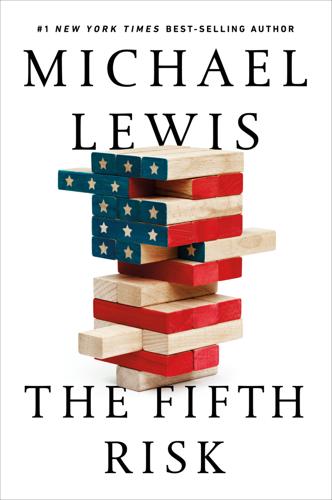
The Fifth Risk
by
Michael Lewis
Published 1 Oct 2018
As the material mushroomed into a book and threatened to receive more attention than I expected, I was relieved and grateful that Janet Byrne agreed once again to make me appear to be a better writer than I am. And I’m not sure what I would do without Starling Lawrence, who has edited my books since I began writing them. Podcasts? ALSO BY MICHAEL LEWIS The Undoing Project Flash Boys The Big Short Boomerang Home Game The Blind Side Coach Moneyball Next The New New Thing Losers Pacific Rift The Money Culture Liar’s Poker EDITED BY MICHAEL LEWIS Panic Copyright © 2018 by Michael Lewis All rights reserved First Edition For information about permission to reproduce selections from this book, write to Permissions, W. W. Norton & Company, Inc., 500 Fifth Avenue, New York, NY 10110 For information about special discounts for bulk purchases, please contact W.

All the Money in the World
by
Peter W. Bernstein
Published 17 Dec 2008
In the early 1990s Clark and Andreessen developed the Web-browsing software that became Netscape and begat the Internet craze. Once again, Clark had come up with another blockbuster. “Bill Gates sent a memo45 to his employees saying that the Internet now posed the greatest threat to Microsoft’s control of the computer industry,” writes Michael Lewis in The New New Thing: A Silicon Valley Story, an entertaining account of the life and times of Jim Clark. “The one thousand Microsoft employees dedicated to building a telecomputer were reassigned to compete with Jim Clark’s startup. Thousands of others at Oracle and Sun and even Time Warner were similarly redirected.”
…
“PeopleSoft prided itself”: The information on David Duffield comes primarily from the interview with him. 42. Only half of the top forty: AnnaLee Saxenian, The New Argonauts: Regional Advantage in a Global Economy (Cambridge, Mass.: Harvard University Press, 2006), p. 34. 43. Soon Silicon Graphics was earning billions: Michael Lewis, The New New Thing: A Silicon Valley Story (New York: Penguin, 2001), p. 47. 44. Clark also foresaw: Ibid., p. 50. 45. “Bill Gates sent a memo”: Ibid., p. 70. 46. “The speed with which Clark”: Ibid., p. 75. 47. When the bubble burst: Ken Kurson, “Don’t Worry Be Happy: Yacht Designers Say They’ve Got a Depression-Proof Business.
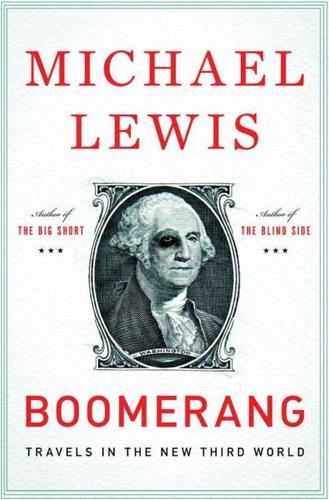
Boomerang: Travels in the New Third World
by
Michael Lewis
Published 2 Oct 2011
ALSO BY MICHAEL LEWIS The Big Short Home Game Liar’s Poker The Money Culture Pacific Rift Losers The New New Thing Next Moneyball Coach The Blind Side EDITED BY MICHAEL LEWIS Panic Michael Lewis Travels in the New Third World W. W. Norton & Company New York • London To Doug Stumpf, gifted editor and gentle soul, without whom it never would have occurred to me to tour the ruins CONTENTS Preface: The Biggest Short I WALL STREET ON THE TUNDRA II AND THEY INVENTED MATH III IRELAND’S ORIGINAL SIN IV THE SECRET LIVES OF GERMANS V TOO FAT TO FLY Acknowledgments PREFACE THE BIGGEST SHORT This book began accidentally, while I was at work on another book, about Wall Street and the 2008 U.S. financial disaster.
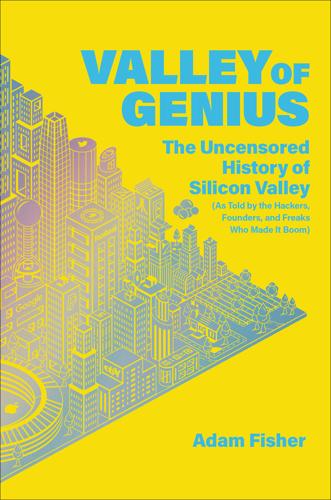
Valley of Genius: The Uncensored History of Silicon Valley (As Told by the Hackers, Founders, and Freaks Who Made It Boom)
by
Adam Fisher
Published 9 Jul 2018
ISBNs: 978-1-4555-5902-2 (hardcover), 978-1-4555-5901-5 (ebook), 978-1-5387-1449-2 (international trade) E3-20180511-JV-NF Contents Cover Title Page Copyright Dedication Epigraph PREFACE Silicon Valley, Explained: The story of the past, as told by the people of the future BOOK ONE Among the Computer Bums The Big Bang: Everything starts with Doug Engelbart Ready Player One: The first T-shirt tycoon The Time Machine: Inventing the future at Xerox PARC Breakout: Jobs and Woz change the game Towel Designers: Atari’s high-strung prima donnas PARC Opens the Kimono: Good artists copy, great artists steal 3P1C F41L: It’s game over for Atari Hello, I’m Macintosh: It sure is great to get out of that bag Fumbling the Future: Who blew it: Xerox PARC—or Steve Jobs? BOOK TWO The Hacker Ethic What Information Wants: Heroes of the computer revolution The Whole Earth ’Lectronic Link: Welcome to the restaurant at the end of the universe Reality Check: The new new thing—that wasn’t From Insanely Great to Greatly Insane: General Magic mentors a generation The Bengali Typhoon: Wired’s revolution of the month Toy Stories: From PARC to Pixar Jerry Garcia’s Last Words: Netscape opened at what?! A Fish, a Barrel, and a Gun: Suck perfects the art of snark Culture Hacking: The cyberunderground goes mainstream BOOK THREE Network Effects The Check Is in the Mail: eBay’s trillion-dollar garage sale The Shape of the Internet: A problem of great googolplexity Free as in Beer: Two teenagers crash the music industry The Dot Bomb: Only the cockroaches survive… and you’re one of the cockroaches The Return of the King: iCame, iSaw, iConquered I’m Feeling Lucky: Google cracks the code I’m CEO… Bitch: Zuck moves to Silicon Valley to “dominate” (and does) Purple People Eater: Apple, the company that cannibalizes itself Twttr: Nose-ring-wearing, tattooed, neck-bearded, long-haired punk hippie misfits To Infinity… and Beyond!
…
And then it became big business, and it was hard for intellectuals to be the primary driving force anymore. It became the businesspeople who started driving it. Which is understandable given the scale and scope of what happened. It just became too large for intellectuals to hold. Reality Check The new new thing—that wasn’t Virtual reality is Silicon Valley’s next new thing. Facebook and Google (not to mention Microsoft) are making huge bets on the technology and battling to control its future. Hollywood has jumped on the bandwagon, too: The best VR content is now showcased every year at the Sundance Film Festival.
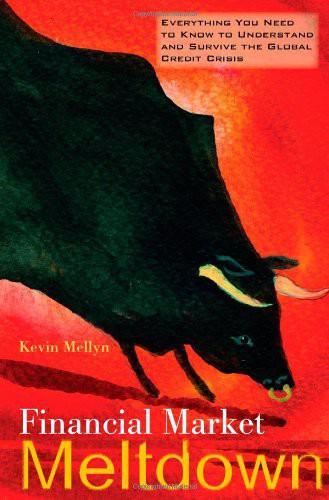
Financial Market Meltdown: Everything You Need to Know to Understand and Survive the Global Credit Crisis
by
Kevin Mellyn
Published 30 Sep 2009
A feeling of safety for a banker comes from doing what all the other banks are doing. If one bank begins to make money doing something that banks had previously steered clear of in the way of lending, other banks are under 17 18 FINANCIAL MARKET MELTDOWN great pressure to follow suit. It takes real courage to buck the herd. Even if the ‘‘new new thing’’ blows up, the bankers who simply did what everyone else was doing seldom lose their jobs. This tendency to lend too easily when times are good is matched by an equally strong instinct for the bank herd to stampede away from lending markets when the economy turns down. In short, bank lending fuels an economic boom on the way up and fuels an economic bust when lending suddenly dries up.
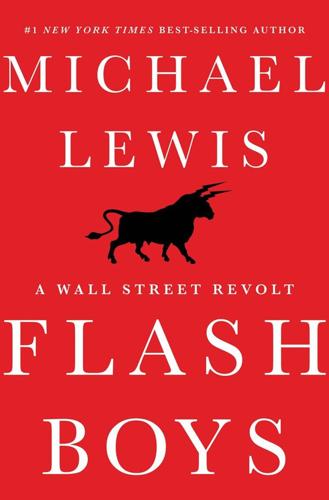
Flash Boys: A Wall Street Revolt
by
Michael Lewis
Published 30 Mar 2014
They are: Lana Amer, Benjamin Aisen, Daniel Aisen, Joshua Blackburn, Donald Bollerman, James Cape, Francis Chung, Adrian Facini, Stan Feldman, Brian Foley, Ramon Gonzalez, Bradley Katsuyama, Craig Katsuyama, Joe Kondel, Gerald Lam, Frank Lennox, Tara McKee, Rick Molakala, Tom O’Brien, Robert Park, Stefan Parker, Zoran Perkov, Eric Quinlan, Ronan Ryan, Rob Salman, Prerak Sanghvi, Eric Schmid, John Schwall, Constantine Sokoloff, Beau Tateyama, Matt Trudeau, Larry Yu, Allen Zhang, and Billy Zhao. ALSO BY MICHAEL LEWIS Boomerang The Big Short Home Game The Blind Side Coach Moneyball Next The New New Thing Losers Pacific Rift The Money Culture Liar’s Poker EDITED BY MICHAEL LEWIS Panic Don’t miss other bestselling titles by MICHAEL LEWIS michaellewiswrites.com “It is the work of our greatest financial journalist, at the top of his game. And it’s essential reading.”
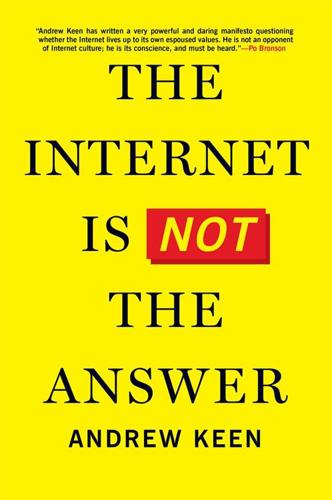
The Internet Is Not the Answer
by
Andrew Keen
Published 5 Jan 2015
In 2008 alone, there were 39,000 jobs lost in the British creative economy.57 Today, in 2014, the prospects of young musicians or entrepreneurs breaking into the industry are dramatically worse than they were twenty-five years ago. Back in 1989, we all wanted to work in the music business; but today, in 2014, the new new thing is multibillion-dollar companies like Spotify and Pandora that are destroying the livelihoods of independent musicians. Yes, the Internet did change everything in the music industry. Music is, indeed, now abundant. And that’s been the catastrophe of the last quarter century. CHAPTER SIX THE ONE PERCENT ECONOMY An Abundance of Stupidity My own epiphany about the Internet’s disastrous impact on culture is well documented.
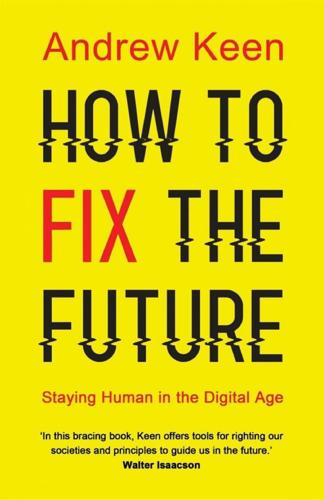
How to Fix the Future: Staying Human in the Digital Age
by
Andrew Keen
Published 1 Mar 2018
So, how to rebuild the future and manifest the human agency that Snowden says we’ve lost? “Five fixes, John,” I say. “Give me five bullet points on how we can fall back in love with the future.” Borthwick’s Five Bullets A cheerful, boyish-looking fellow with a mop of dark hair, Borthwick grins at my challenge. Rather than the personal computer or the internet, for him the new new thing is artificial intelligence—the technology behind networked smart machines, smart cars, smart algorithms, smart homes, and smart cities. It’s the superintelligent technology that some people fear could destroy humanity, and that’s what preoccupies Borthwick at first when he addresses my question.
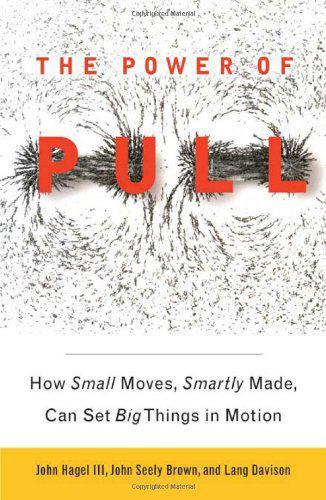
The Power of Pull: How Small Moves, Smartly Made, Can Set Big Things in Motion
by
John Hagel Iii
and
John Seely Brown
Published 12 Apr 2010
As top surfers, Dusty and his friends might already know how to execute a “pop-shove-it,” in which you rotate your board 180 degrees while in midair (a move learned from skateboarders), but what about the “superman,” where you quickly thrust the board in front of you, at arm’s length, while “flying” behind it? When somebody mastered that move on a surf break half a world away, Dusty and the others were some of the first to know about it. In this case the surfer’s “stock” of knowledge—the pop-shove-it—had just become less than the newest thing. Its value had diminished relative to the new new thing—the superman—that was getting its own fifteen minutes of fame before something else would inevitably supplant it. And yet these young men knew about it almost immediately. How do they keep up? By heading over to Surfermag.com, Surfingthemag.com, Surfline.com, or TWsurf.com and making sure they’ve seen the newest surfing maneuvers nearly as soon as they’ve been shot.

Women and Autoimmune Disease
by
Robert G. Lahita
Published 1 Jan 2004
Another wonderful advance in treating rheumatoid arthritis is the advent of drugs called DMARDs, or disease-modifying arthritisrelated drugs, which do not treat the symptoms, but rather treat the disease process. The chemotherapeutic drugs such as methotrexate, hydroxychloroquine, and Imuran are examples of DMARDs that I give to patients early in the game to prevent the destruction of bone and joints. � Biological Response Modifiers: The New New Thing As terrific as it is to be able to relieve pain and prevent the inexorable destruction of joints, today the big excitement is in the biological response modifiers. This new approach to RA is designed to interrupt the work of cytokines, the communications molecules. If we block these message-carrying molecules—cytokines, like tumor necrosis factor (TNF), and chemokines—we can block the messages and ultimately abort or at least slow down the disease process.
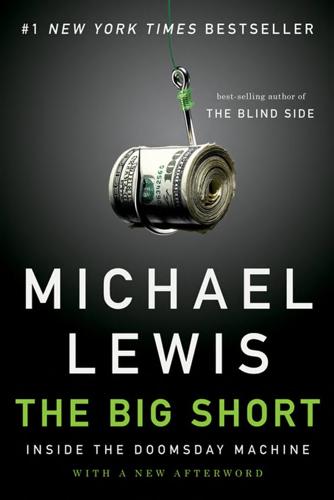
The Big Short: Inside the Doomsday Machine
by
Michael Lewis
Published 1 Nov 2009
The Big Short Also by Michael Lewis Home Game Liar's Poker The Money Culture Pacific Rift Losers The New New Thing Next Moneyball Coach The Blind Side EDITED BY MICHAEL LEWIS Panic The Big Short INSIDE THE DOOMSDAY MACHINE Michael Lewis W. W. NORTON & COMPANY NEW YORK LONDON Copyright (c) 2010 by Michael Lewis All rights reserved For information about permission to reproduce selections from this book, write to Permissions, W. W. Norton & Company, Inc., 500 Fifth Avenue, New York, NY 10110 ISBN: 978-0-393-07819-0 W. W. Norton & Company, Inc. 500 Fifth Avenue, New York, N.Y. 10110 www.wwnorton.com W.
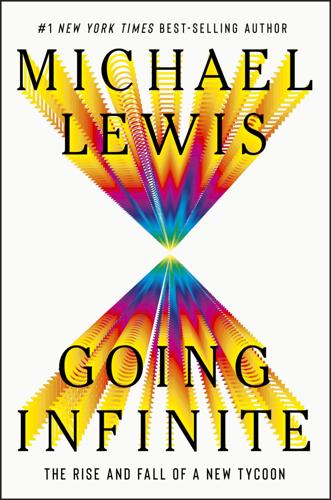
Going Infinite: The Rise and Fall of a New Tycoon
by
Michael Lewis
Published 2 Oct 2023
Janet Byrne is still somehow considered my copyeditor, but with each book her influence extends further into places that normal copyeditors never reach. And I owe more than I can express here to my editors, Tom Penn and, of course, Starling Lawrence. ALSO BY MICHAEL LEWIS The Premonition The Fifth Risk The Undoing Project Flash Boys Boomerang The Big Short Home Game The Blind Side Coach Moneyball Next The New New Thing Losers Pacific Rift The Money Culture Liar’s Poker EDITED BY MICHAEL LEWIS Panic AUDIBLE ORIGINALS Playing to Win The Coming Storm Copyright © 2023 by Michael Lewis All rights reserved First Edition Page 15: Excerpt from “Met Gala,” Wikipedia, https://en.wikipedia.org/w/index.php?
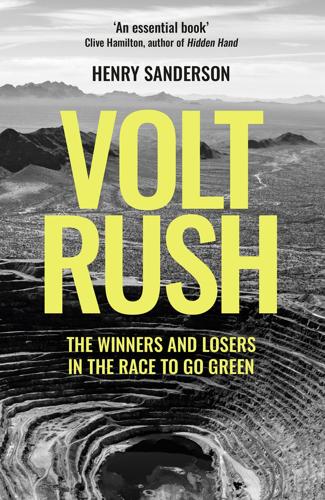
Volt Rush: The Winners and Losers in the Race to Go Green
by
Henry Sanderson
Published 12 Sep 2022
* On an unseasonably cold and overcast day in late May, I decided to pay a visit to a shop in south London that re-used electric vehicle batteries to convert old cars. I had read about Ewan McGregor spending £30,000 retrofitting his 1954 VW Beetle to go electric. It seemed strangely counterintuitive: electric cars were the new new thing; how could they help revive an old thing? Matthew Quitter, a friendly man with a greying beard and swept-back hair, opened a large wooden gate to welcome me to his garage under a railway arch in a narrow street near the Thames. Inside stood a number of old cars that had had their engines taken out and replaced with batteries and electric motors: a 1983 Land Rover, an old Mini and a proud black Bentley.
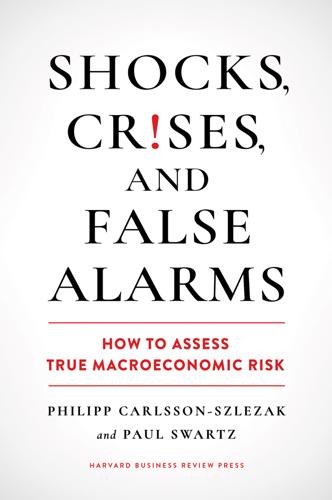
Shocks, Crises, and False Alarms: How to Assess True Macroeconomic Risk
by
Philipp Carlsson-Szlezak
and
Paul Swartz
Published 8 Jul 2024
The Railway Mania was a classic stock-market bubble in the United Kingdom in the 1840s (and not the only bubble in railroad stocks). As railway share prices increased, speculators moved in pushing prices to unsustainable levels, followed by a collapse. Regarding the tech bubble, see Michael Lewis, The New New Thing: A Silicon Valley Story (New York: W. W. Norton & Company, 2000). 4. Regarding cryptocurrencies, we realize that many will disagree, and perhaps not all pockets of crypto are a bubble. But we should be able to agree that dogecoin was evidence of froth. Regarding NFTs, digital assets are likely to be real, but the $2.9 million paid for the digital rights to the first-ever tweet from Jack Dorsey seems off.

My Life as a Quant: Reflections on Physics and Finance
by
Emanuel Derman
Published 1 Jan 2004
Years earlier, reading it aloud without thinking, I had thought it only a forced rhyme about a talking dog. Now, I suddenly understood it. Though I was "upstairs" and more critical to the business than she was, she was "downstairs" in a finer establishment. As years went by I learned that quants, like the little boy in A. A. Milne's poem, are always halfway down the stairs. The new new thing in the derivatives world in 1990 was exotic options. My absorption in this world was triggered by the excitement at Goldman over what we all referred to as the "Kingdom of Denmark puts" On the last trading day of 1989, the Nikkei 225 index of Japanese stocks reached its zenith of 38,915.90.

Losing the Signal: The Spectacular Rise and Fall of BlackBerry
by
Jacquie McNish
and
Sean Silcoff
Published 6 Apr 2015
By the end of the first day, Klimstra’s pockets bulged with business cards. “It was like shooting fish in a barrel,” he said. The next day, McMurtry and a few more evangelists were on the first plane to Boston. Conference goers hadn’t seen anything like the BlackBerry. At a time when primitive two-way paging was considered the new new thing and Internet browsing was still a novelty, a device offering instant access to office e-mails was startling. Initially, the miniature keyboard baffled conference attendees. Some scrunched fingers to try to type on the tiny keyboard as they would on their personal computers. Others poked at the tiny keys with a pencil.
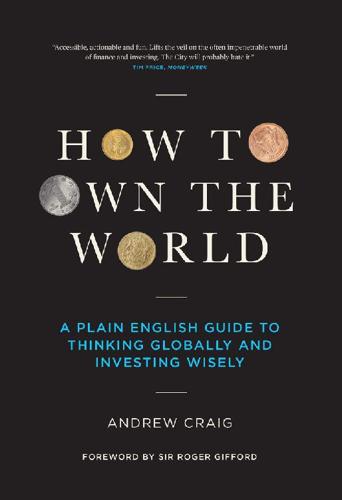
How to Own the World: A Plain English Guide to Thinking Globally and Investing Wisely
by
Andrew Craig
Published 6 Sep 2015
HarperCollins Canada, 2009. Lewis, Michael. The Big Short: Inside the Doomsday Machine. New York: W. W. Norton & Company, 2010. ———. Flash Boys: A Wall Street Revolt. Penguin, 2015. ———. Liar’s Poker: Rising through the Wreckage on Wall Street. New York: W. W. Norton & Company, 2010. ———. The New New Thing: A Silicon Valley Story. New York: Penguin, 2001. Lieven, Anatol, and John Hulsman. Ethical Realism: A Vision for America’s Role in the World. New York: Pantheon, 2006. Lovelock, James. The Revenge of Gaia: Earth’s Climate in Crisis and the Fate of Humanity. New York: Basic Books, 2007. Lowenstein, Roger.
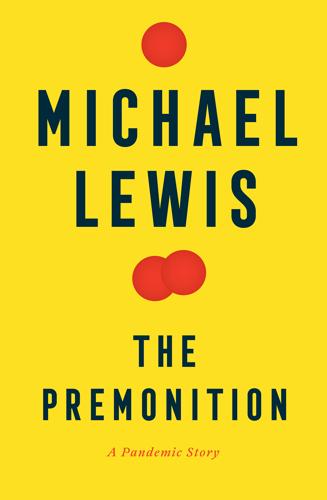
The Premonition: A Pandemic Story
by
Michael Lewis
Published 3 May 2021
Finally, there’s always someone you are sort of writing these books for—the person you sort of imagine reading it. That would be my editor, Starling Lawrence. His flowers are still the freshest in town. ALSO BY MICHAEL LEWIS The Fifth Risk The Undoing Project Flash Boys Boomerang The Big Short Home Game The Blind Side Coach Moneyball Next The New New Thing Losers Pacific Rift The Money Culture Liar’s Poker EDITED BY MICHAEL LEWIS Panic Copyright © 2021 by Michael Lewis All rights reserved First Edition For information about permission to reproduce selections from this book, write to Permissions, W. W. Norton & Company, Inc., 500 Fifth Avenue, New York, NY 10110 For information about special discounts for bulk purchases, please contact W.
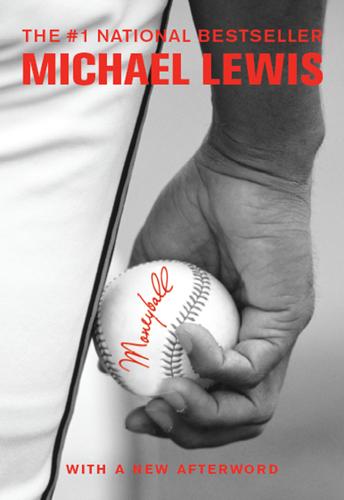
Moneyball
by
Michael Lewis
Published 1 Jan 2003
—Nick Hornby, The Believer “Fantastically informative and entertaining…bound to excite extreme envy.” —Josh Benson, New York Observer “Open this book…and your mind.” —Nat Newell, Columbia, South Carolina, State ALSO BY MICHAEL LEWIS Liar’s Poker The Money Culture Pacific Rift Losers The New New Thing Next MONEYBALL The Art of Winning an Unfair Game MICHAEL LEWIS W. W. NORTON & COMPANY NEW YORK LONDON Copyright © 2004, 2003 by Michael Lewis All rights reserved First published as a Norton 2004 For information about permission to reproduce selections from this book, write to Permissions, W.
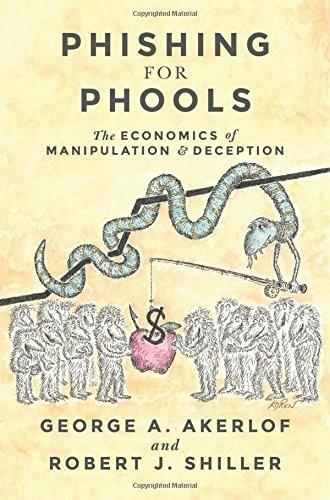
Phishing for Phools: The Economics of Manipulation and Deception
by
George A. Akerlof
,
Robert J. Shiller
and
Stanley B Resor Professor Of Economics Robert J Shiller
Published 21 Sep 2015
Some molecules have “chirality”: they come in either right-handed or left-handed form. The only difference between Nexium and Prilosec lies in the chirality of some of their molecules. (See Goldacre, Bad Pharma, pp. 146–48.) The marketing division then was assigned its task: to convince the good doctor that he should prescribe the new, new thing, just as the good teacher conscientiously assigns the latest-edition textbook. Chapter Seven: Innovation: The Good, the Bad, and the Ugly 1. The US Census estimated the world population of adults (those over the age of 20) at 4.725 billion in mid-2014. US Census Bureau, “World Population by Age and Sex,” last accessed December 1, 2014, http://www.census.gov/cgi-bin/broker.
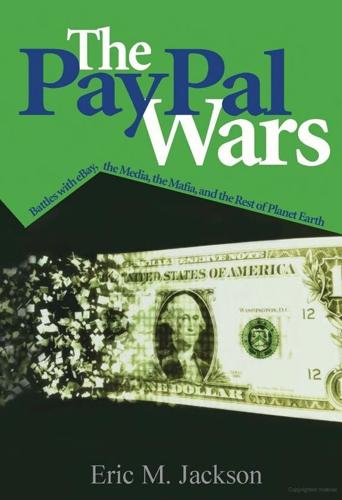
The Paypal Wars: Battles With Ebay, the Media, the Mafia, and the Rest of Planet Earth
by
Eric M. Jackson
Published 15 Jan 2004
Adam Feuerstein, “X.com Raises $100 Million,” Upside Today, April 5, 2000, no longer available online. 14. Jim Seymour, “The Perils of Betting on ‘Concept Companies,’” TheStreet.com, http://www.thestreet.com/pf/comment/techsavvy/1139783.html. This story is also delightfully told by Michael Lewis in his classic Silicon Valley tale The New New Thing, (New York: Penguin Books, 2000), 91-101. 15. Sam Ames, “Earnings Season May Stabilize Jittery Markets,” News.com, April 10, 2000, http://news.com.com/2100-1023_3-239062.html. 16. For a recent history of the federal funds target rate, see Federal Reserve Monitor, The Wall Street Journal, http://online.wsj.com/documents/mktindex.htm?
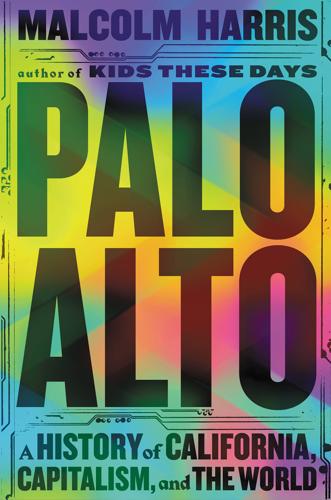
Palo Alto: A History of California, Capitalism, and the World
by
Malcolm Harris
Published 14 Feb 2023
Martin Kenney (Redwood City, CA: Stanford University Press, 2000), 235. 12. Ibid., 235. 13. Ron Sirak, “Nike Has a Tiger by the Tail,” Associated Press, January 30, 1997. 14. Gary Rivlin, The Godfather of Silicon Valley: Ron Conway and the Fall of the DotComs (New York: Random House, 2001), 31. 15. Michael Lewis, The New New Thing: A Silicon Valley Story (New York: W. W. Norton, 2014), 109. 16. Michael Lewis, “The Little Creepy Crawlers Who Will Eat You in the Night,” New York Times Magazine, March 1, 1998. 17. William Roseberry, “The Rise of Yuppie Coffees and the Reimagination of Class in the United States,” American Anthropologist 98, no. 4 (December 1996): 762–75. 18.
…
Gover, “The American Enterprise Institute’s Near-Death Experience,” SNF Agora Case Study, Johns Hopkins Stavros Niarchos Foundation, December 2020. 50. Alan Greenspan, “The Challenge of Central Banking in a Democratic Society: Remarks at the Annual Dinner and Francis Boyer Lecture of the American Enterprise Institute” (Washington, DC, December 5, 1996), https://www.federalreserve.gov/boarddocs/speeches/1996/19961205.htm. 51. Lewis, The New New Thing, 98. 52. Ibid., 219. 53. Amazon.com, “Press Release: Pets.Com Raises $50 Million from Amazon.Com, Bowman Capital, and Hummer Winblad Venture Partners,” June 14, 1999. 54. Jerry Useem, “All Dressed Up and No IPO,” Inc., February 1, 1998, https://www.inc.com/magazine/19980201/867.html. 55.
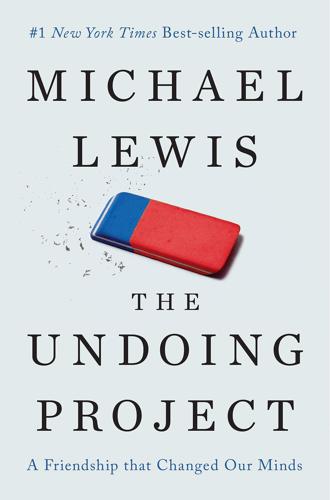
The Undoing Project: A Friendship That Changed Our Minds
by
Michael Lewis
Published 6 Dec 2016
Finally, the possibility that this might be the last book that I ever give Bill Rusin to sell got my rear end in the desk chair sooner than I otherwise would have, so that he might work his magic. But not for the last time, I hope. ALSO BY MICHAEL LEWIS Flash Boys The Big Short Boomerang Home Game The Blind Side Coach Moneyball Next The New New Thing Losers Pacific Rift The Money Culture Liar’s Poker EDITED BY MICHAEL LEWIS Panic Copyright © 2017 by Michael Lewis All rights reserved First Edition For information about permission to reproduce selections from this book, write to Permissions, W. W. Norton & Company, Inc., 500 Fifth Avenue, New York, NY 10110 For information about special discounts for bulk purchases, please contact W.
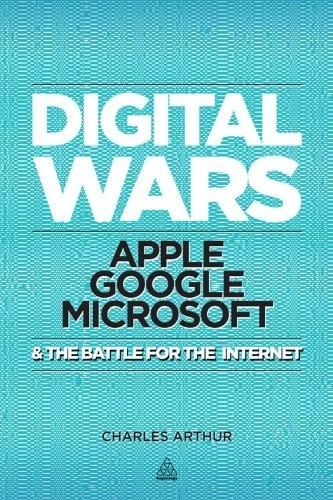
Digital Wars: Apple, Google, Microsoft and the Battle for the Internet
by
Charles Arthur
Published 3 Mar 2012
filingID=1047469-98-44981&CIK=320193 3 http://www.sec.gov/Archives/edgar/data/789019/000132210-98-001067.txt References and further reading Auletta, Ken (2009) Googled: The end of the world as we know it, Virgin Books, London Battelle, John (2005) The Search: How Google and its rivals rewrote the rules of business and transformed our culture, Nicholas Brealey, London Deutschman, Alan (2000) The Second Coming of Steve Jobs, Broadway Books, New York Edwards, Douglas (2011) I’m Feeling Lucky: The confessions of Google employee number 59, Allen Lane, London Elliot, Jay (2011) The Steve Jobs Way: iLeadership for a new generation, Vanguard Press, New York Foley, Mary Jo (2008) Microsoft 2.0: How Microsoft plans to stay relevant in the post-Gates era, John Wiley, Hoboken, NJ Isaacson, Walter (2011) Steve Jobs, Little, Brown, London Kirkpatrick, David (2010) The Facebook Effect: The inside story of the company that is connecting the world, Simon & Schuster, New York Levis, Kieran (2009) Winners and Losers: Creators and casualties of the age of the internet, Atlantic Books, London Levy, Steven (2006) The Perfect Thing: How the iPod became the defining object of the 21st century, Ebury Press, London Levy, Steven (2011) In the Plex: How Google thinks, works and shapes our lives, Simon & Schuster, New York Lewis, Michael (1999) The New New Thing: A Silicon Valley story, Hodder & Stoughton, London Norman, Donald A (2004) Emotional Design: Why we love (or hate) everyday things, Basic Books, New York Wu, Tim (2011) The Master Switch: The rise and fall of information empires, Atlantic Books, London Acknowledgements First mention must go to Susannah Lear, who e-mailed me out of the blue with the Velcro-covered idea of a book about these three companies and their interactions.
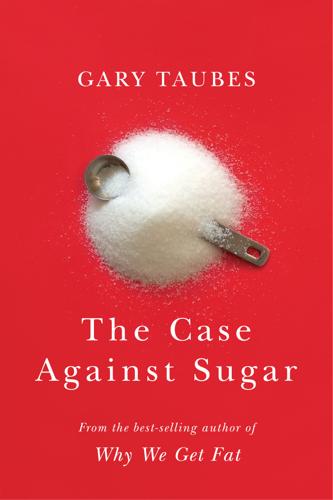
The Case Against Sugar
by
Gary Taubes
Published 27 Dec 2016
The ability to sequence the genomes of these bacterial species has opened up a new frontier of research, just as the ability to measure blood pressure, cholesterol, or insulin sensitivity did for earlier generations of researchers. The microbiome research, because it’s brand-new, is at a very preliminary stage. Still, as the new new thing (to borrow a phrase from the journalist Michael Lewis) in obesity and diabetes research, gut bacteria get an inordinate amount of attention, particularly from the media, though we may not know for decades what to make of the observations that ensue—what is signal and what is noise. Most of the work so far has been done in laboratory mice and rats, and the relevance to human life (or even to other laboratory animals) is unclear.

Mind in Motion: How Action Shapes Thought
by
Barbara Tversky
Published 20 May 2019
Yet, millennia ago, people began making egoless maps, broad views of landmarks and paths (the flattened framework) relative to each other, views that brought in far more than could be seen from a single place. Creating a map means integrating many different experiences and flattening them to a plane. Some of those experiences come from the moving bubble, but others may be indirect, from other people’s reports or sketch maps. The new new thing keeps changing, that’s a given. But the oldest old thing keeps changing too. As new archaeological sites are discovered, the oldest known map keeps moving backward. Of course, we are unlikely to find the really and truly oldest maps because they were probably arrangements of sticks and stones or drawn in the sand or gestured in the air and are unlikely to have survived.
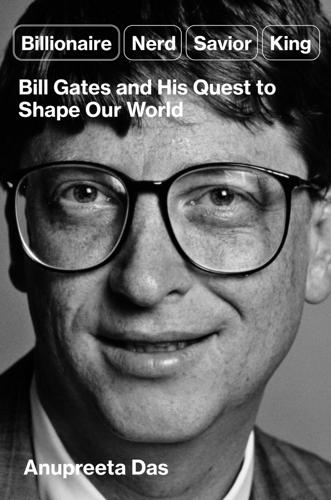
Billionaire, Nerd, Savior, King: Bill Gates and His Quest to Shape Our World
by
Anupreeta Das
Published 12 Aug 2024
Isaacson, Walter. Steve Jobs. New York: Simon & Schuster Paperbacks, 2021. Kidder, Tracy. The Soul of a New Machine. Boston: Back Bay Books, 2000. Kohlenberger, Judith. The New Formula for Cool: Science, Technology, and the Popular in the American Imagination. Transcript Publishing, 2016. Lewis, Michael. The New New Thing: A Silicon Valley Story. New York: W.W. Norton, 2000. Loomis, Carol, ed. Tap Dancing to Work: Warren Buffett on Practically Everything, 1966–2012. New York: Portfolio/Penguin, 2012. Lowe, Janet. Bill Gates Speaks: Insights from the World’s Greatest Entrepreneur. New York: John Wiley and Sons, 1998.
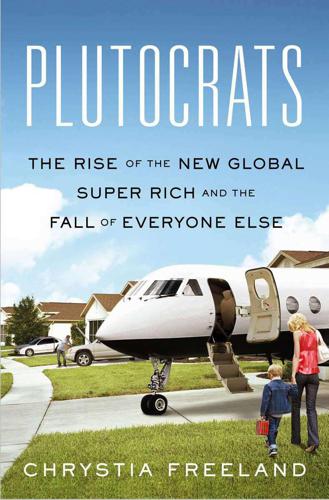
Plutocrats: The Rise of the New Global Super-Rich and the Fall of Everyone Else
by
Chrystia Freeland
Published 11 Oct 2012
The 2010 lineup of Zeitgeist speakers included such notables as Archbishop Desmond Tutu, London mayor Boris Johnson, and Starbucks CEO Howard Schultz (not to mention, of course, Google’s own CEO, Eric Schmidt). But the most potent currency at this and comparable gatherings is neither fame nor money. Rather, it’s what author Michael Lewis has dubbed “the new new thing”—the insight or algorithm or technology with the potential to change the world. Hence the presence of three Nobel laureates, including Daniel Kahneman, a pioneer in behavioral economics. One of the business stars in attendance was then thirty-six-year-old entrepreneur Tony Hsieh, who had sold his Zappos online shoe retailer to Amazon for more than a billion dollars the previous summer.
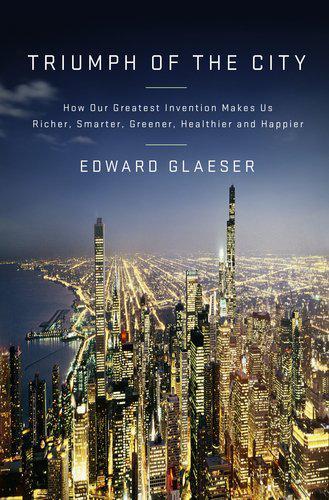
Triumph of the City: How Our Greatest Invention Makes Us Richer, Smarter, Greener, Healthier, and Happier
by
Edward L. Glaeser
Published 1 Jan 2011
Henry Ford got his start in the engine business, while Billy Durant, the entrepreneur behind General Motors, began making horse-drawn carriages in nearby Flint. At the end of the nineteenth century, Detroit looked a lot like Silicon Valley in the 1960s and 1970s. The Motor City thrived as a hotbed of small innovators, many of whom focused on the new new thing, the automobile. The basic science of the automobile had been worked out in Germany in the 1880s, but the German innovators had no patent protection in the United States. As a result, Americans were competing furiously to figure out how to produce good cars on a mass scale. In general, there’s a strong correlation between the presence of small firms and the later growth of a region.

Culture and Prosperity: The Truth About Markets - Why Some Nations Are Rich but Most Remain Poor
by
John Kay
Published 24 May 2004
London and New York: Oxford University Press. Levy, M. R 1989. The VCR Age: Home Video and Mass Communication. Newbury Park, Cali£: Sage Publications. Lewis, A., and T. W. Schultz. 1953. The Economic Organization ofAgriculture. New York: McGraw-Hill. Lewis, M. 1989. Liar's Poker: Two Cities) True Greed. New York: Penguin. ---. 2000. The New New Thing. New York: W. W. Norton. Lewis, W. A. 1954. "Economic Development with Unlimited Supplies of Labor." Manchester School 22 (May): 139-91. Liebowitz, S.]., and S. E. Margolis. 1990. "The Fable of the Keys." journal ofLaw and Economics 33 (April): 1-25. Little, I. 1996. Picking Winners: The East Asian Experience.
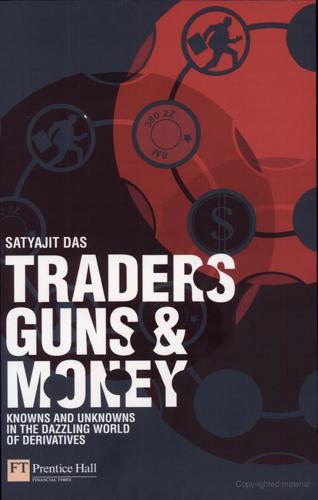
Traders, Guns & Money: Knowns and Unknowns in the Dazzling World of Derivatives
by
Satyajit Das
Published 15 Nov 2006
A few cultivate a taste for narcotics to fuel the blood-lust of the trading rooms. Over time, the impact of high income on the survivors is different. The divorces, maintenance payments and lifestyle require vast sums, but money also becomes a scorecard of success. Michael Lewis, the successful author of Liar’s Poker and The New New Thing, writing about the failure of Long Term Capital Management (LTCM), finds himself fixated by something that seems like envy. Hans Hufschmid, a former colleague of Lewis’s at Salomon, had worked at LTCM where his investment was worth maybe $50 million, at least until it DAS_C03.QXP 8/7/06 78 4:25 PM Page 78 Tr a d e r s , G u n s & M o n e y collapsed.
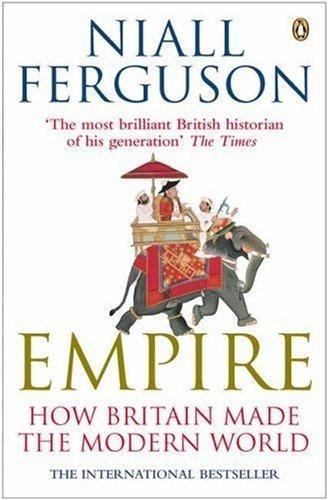
Empire: How Britain Made the Modern World
by
Niall Ferguson
Published 1 Jan 2002
More than anyone else in Europe, the English developed an insatiable appetite for imported commodities. In particular, what the English consumer liked was to mix his sugar with an orally administered and highly addictive drug, caffeine, supplemented with an inhaled but equally addictive substance, nicotine. In Defoe’s time, tea, coffee, tobacco and sugar were the new, new things. And all of them had to be imported. The first recorded English request for a pot of tea is in a letter dated 27 June 1615 from Mr R. Wickham, agent of the East India Company on the Japanese island of Hirado, to his colleague Mr Eaton at Macao, asking him to send on only ‘the best sort of chaw’.

The Contrarian: Peter Thiel and Silicon Valley's Pursuit of Power
by
Max Chafkin
Published 14 Sep 2021
recent failures of Asian economies: David Sacks and Peter Thiel, “Internet Shakes Up Complacent Press,” The San Francisco Chronicle, March 10, 1998, https://www.independent.org/news/article.asp?id=60. lost investors’ money: Details on the fund’s early structure and losses were revealed by a 2006 lawsuit filed by an early investor, Amisil Holdings, in a San Francisco state court. 150-foot yacht: Michael Lewis, The New New Thing (New York: W. W. Norton, 2000). $125 million divorce: John Carney, “Netscape Founder Jim Clark’s $125M Divorce,” Dealbreaker, November 13, 2006, https://dealbreaker.com/2006/11/netscape-founder-jim-clarks-125m-divorce. Levchin later recalled: Sarah Lacy, “I Almost Lost My Leg to a Crazy Guy with a Geiger Counter,” PandoDaily, August 17, 2017, https://pando.com/2017/08/17/i-almost-lost-my-leg-crazy-guy-geiger-counter-max-levchin-and-other-valley-icons-share-their-stories-luck/.
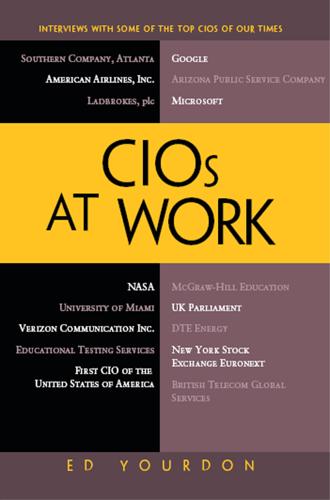
CIOs at Work
by
Ed Yourdon
Published 19 Jul 2011
One is the whole generational issue. Do you see significant differences in the behaviors and attitudes of the new generation of workers that you’re hiring out of university today as compared to, I don’t know, five or ten years ago? Ellyn: Yes. However, because I’ve always been at the edge of advanced technologies and the new, new things, even back in my Chrysler days, I had the fresh-out-of-the-university rotational. Everybody wanted to be in the advanced technology group for at least one rotation. Yourdon: Right. Ellyn: When I was in Silicon Valley, the two times I was there, obviously, I was doing the adult supervision thing.
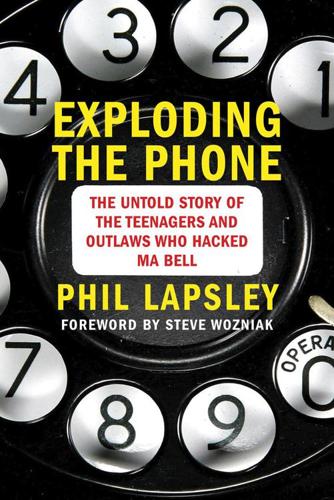
Exploding the Phone: The Untold Story of the Teenagers and Outlaws Who Hacked Ma Bell
by
Phil Lapsley
Published 5 Feb 2013
The problem, of course, was that these techniques all pretty much sucked; this is why you carry a cell phone in your pocket and not a signal flag or a pigeon. But we didn’t get to cell phones overnight. It took repeated assaults on the problem to before humanity managed to make a dent in it. In the late 1700s the new new thing in the world of communications was something called the optical telegraph. A network of windmill-like towers with pivoting shutters, blades, arms, or paddles that could be seen from a distance, the optical telegraph allowed reliable long-distance communications. Several systems were built but the best known was created by Claude Chappe and his brothers and deployed throughout France starting in 1793.

Fancy Bear Goes Phishing: The Dark History of the Information Age, in Five Extraordinary Hacks
by
Scott J. Shapiro
“It’s pretty amazing how poorly secured their Web properties are,” said Jack Koziol, who examined T-Mobile’s web code. “Most of these flaws are simple Web Security 101, stuff you’d learn about in the first few chapters of a basic book on how to secure Web applications.” Like Microsoft before it, T-Mobile went overboard on the new-new thing. Cloud-based technology was proving extremely popular, and T-Mobile tried to get in on the action. The mad scramble to provide customers 24-7 access to their data in the cloud through websites led to shoddy code that even a teenager could exploit. T-Mobile could compete furiously without fear of liability for its recklessness.

The World's Banker: A Story of Failed States, Financial Crises, and the Wealth and Poverty of Nations
by
Sebastian Mallaby
Published 24 Apr 2006
The Witch Doctors: Making Sense of the Management Gurus, by John Micklethwait and Adrian Wooldridge (New York: Times Books, 1996), pp. 3, 281. 4. Ibid., pp. 284–86. 5. Robert Picciotto interview, February 26, 2003. Picciotto e-mails, July 20 and 21, 2003. 6. I owe this term to Michael Lewis. See The New New Thing: A Silicon Valley Story (New York: Penguin USA, 2001), p. 35ff. 7. Johannes Linn interview, June 3, 2003. Linn was the coleader of this group. 8. Jean-François Rischard interview, April 22, 2003. Caio Koch-Weser interview, May 26, 2003. Mark Baird interview, July 11, 2003. 9. Koch-Weser interview, May 26, 2003. 10.
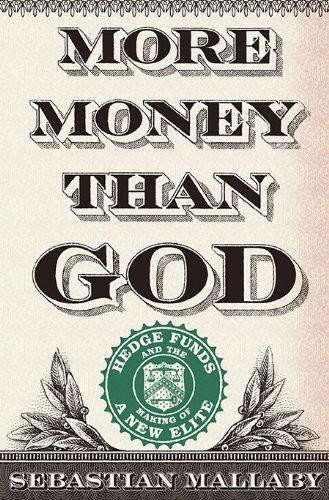
More Money Than God: Hedge Funds and the Making of a New Elite
by
Sebastian Mallaby
Published 9 Jun 2010
Robertson confirms that Tiger’s sale of South Korea Telecom helped to drive the price down in the summer. See Julian H. Robertson, letter to limited partners, September 10, 1999. 24. David Einhorn. Fooling Some of the People All of the Time: A Long Short Story (Hoboken, NJ: John Wiley & Sons, 2008), pp. 33–34. 25. Cassidy, Dot.con, pp. 95–96. 26. Michael Lewis, The New New Thing: A Silicon Valley Story (New York: W. W. Norton, 1999), p. 165. 27. Einhorn, Fooling Some of the People All of the Time: A Long Short Story, p. 37. It should be noted that Einhorn’s other short positions generated a large profit in 1999, a rare case of a hedge fund successfully bucking the bubble. 28.
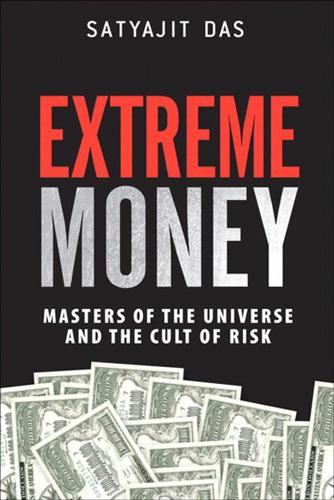
Extreme Money: Masters of the Universe and the Cult of Risk
by
Satyajit Das
Published 14 Oct 2011
Randall Lane (2010) The Zeroes: My Misadventures in the Decade Wall Street Went Insane, Scribe Publications, Melbourne. Edwin Lefèvre (2005) Reminiscences of a Stock Operator, John Wiley, New Jersey. Michael Lewis (1989) Liar’s Poker: Two Cities, True Greed, Hodder & Stoughton, London. Michael Lewis (1991) The Money Culture, Penguin Books, New York. Michael Lewis (1999) The New New Thing: A Silicon Valley Story, Coronet, London. Michael Lewis (ed.) (2008) Panic: The Story of Modern Financial Insanity, Penguin Books, London. Michael Lewis (2010) The Big Short: Inside the Doomsday Machine, Allen Lane, London. Michael E. Lewitt (2010) The Death of Capital: How Creative Policy Can Restore Policy, John Wiley, New Jersey.
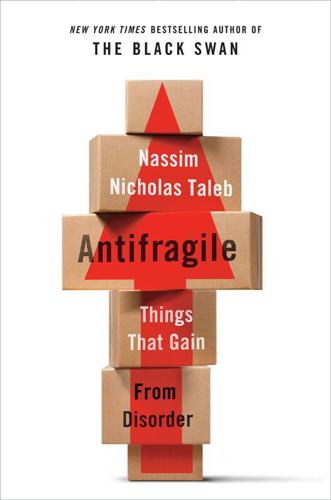
Antifragile: Things That Gain From Disorder
by
Nassim Nicholas Taleb
Published 27 Nov 2012
This treadmill effect has been investigated by Danny Kahneman and his peers when they studied the psychology of what they call hedonic states. People acquire a new item, feel more satisfied after an initial boost, then rapidly revert to their baseline of well-being. So, when you “upgrade,” you feel a boost of satisfaction with changes in technology. But then you get used to it and start hunting for the new new thing. But it looks as though we don’t incur the same treadmilling techno-dissatisfaction with classical art, older furniture—whatever we do not put in the category of the technological. You may have an oil painting and a flat-screen television set inhabiting the same room of your house. The oil painting is an imitation of a classic Flemish scene made close to a century ago, with the dark ominous skies of Flanders, majestic trees, and an uninspiring but calmative rural scene.

The Power Law: Venture Capital and the Making of the New Future
by
Sebastian Mallaby
Published 1 Feb 2022
BACK TO NOTE REFERENCE 64 In reality, Clark had been treated somewhat roughly, but not as roughly as he thought: T. J. Rodgers, the superstar founder of Cypress Semiconductor, had likewise owned only 3.1 percent of his company when it had gone public in 1986, because semiconductor companies require a huge amount of capital to get started. BACK TO NOTE REFERENCE 65 Michael Lewis, The New New Thing: A Silicon Valley Story (New York: W. W. Norton, 2014), 39–41. BACK TO NOTE REFERENCE 66 Clark, Netscape Time, 75–77. BACK TO NOTE REFERENCE 67 Clark, Netscape Time, 7. BACK TO NOTE REFERENCE 68 “Amendment No. 6 to Form S-1 Registration Statement: Netscape Communications Corporation,” Securities and Exchange Commission, June 23, 1995, 48.
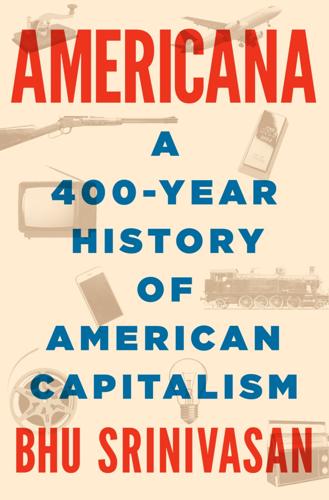
Americana: A 400-Year History of American Capitalism
by
Bhu Srinivasan
Published 25 Sep 2017
Master of Precision: Henry M. Leland. Detroit: Wayne State University Press, 1966. Lemann, Nicholas. The Promised Land. New York: Alfred A. Knopf, 1991. Levy, Jonathan. Freaks of Fortune: The Emerging World of Capitalism and Risk in America. Cambridge, MA: Harvard University Press, 2014. Lewis, Michael. The New New Thing: A Silicon Valley Story. New York: W. W. Norton, 1999. Lewis, Tom. Empire of the Air: The Men Who Made Radio. New York: Edward Burlingame Books, 1991. Lind, Michael. Land of Promise: An Economic History of the United States. New York: Harper, 2013. Lindbergh, Charles A. The Wartime Journals of Charles A.

The Rise of the Network Society
by
Manuel Castells
Published 31 Aug 1996
Levy, R.A., Bowes, M. and Jondrow, J.M. (1984) “Technical advance and other sources of employment change in basic industry”, in E.L. Collins and L.D. Tanner (eds), American Jobs and the Changing Industrial Base, Cambridge, MA: Ballinger, pp. 77–95. Levy, Stephen (1984) Hackers: Heroes of the Computer Revolution, Garden City, NY: Doubleday. Lewis, Michael (2000) The New New Thing: a Silicon Valley Story, New York: W. W. Norton. Lichtenberg, Judith (ed.) (1990) Democracy and Mass Media, New York: Cambridge University Press. Lillyman, William, Moriarty, Marilyn F. and Neuman, David J. (eds) (1994) Critical Architecture and Contemporary Culture, New York: Oxford University Press.

Americana
by
Bhu Srinivasan
Master of Precision: Henry M. Leland. Detroit: Wayne State University Press, 1966. Lemann, Nicholas. The Promised Land. New York: Alfred A. Knopf, 1991. Levy, Jonathan. Freaks of Fortune: The Emerging World of Capitalism and Risk in America. Cambridge, MA: Harvard University Press, 2014. Lewis, Michael. The New New Thing: A Silicon Valley Story. New York: W. W. Norton, 1999. Lewis, Tom. Empire of the Air: The Men Who Made Radio. New York: Edward Burlingame Books, 1991. Lind, Michael. Land of Promise: An Economic History of the United States. New York: Harper, 2013. Lindbergh, Charles A. The Wartime Journals of Charles A.
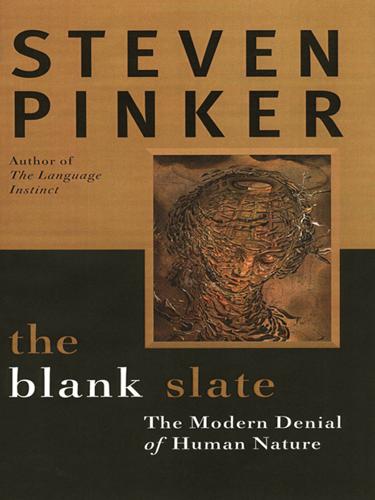
The Blank Slate: The Modern Denial of Human Nature
by
Steven Pinker
Published 1 Jan 2002
The psychologist Colin Martindale has documented that every art form increases in complexity, ornamentation, and emotional charge until the evocative potential of the style is fully exploited.51 Attention then turns to the style itself, at which point the style gives way to a new one. Martindale attributes this cycle to habituation on the part of the audience, but it also comes from the desire for attention on the part of the artists. In twentieth-century art, the search for the new new thing became desperate because of the economies of mass production and the affluence of the middle class. As cameras, art reproductions, radios, records, magazines, movies, and paperbacks became affordable, ordinary people could buy art by the carload. It is hard to distinguish oneself as a good artist or discerning connoisseur if people are up to their ears in the stuff, much of it of reasonable artistic merit.
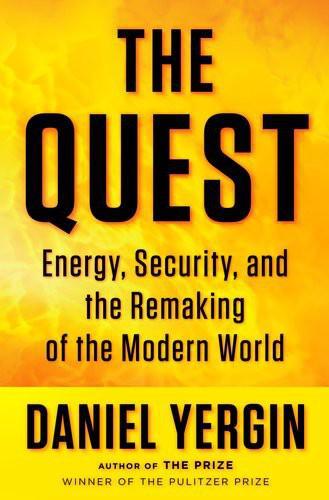
The Quest: Energy, Security, and the Remaking of the Modern World
by
Daniel Yergin
Published 14 May 2011
At the same time, the situation in Iraq was deteriorating, and Bush increasingly saw reliance on imported oil as a weakness to America’s position in the world. On a trip to California, a venture capitalist who was the co-chairman of a presidential science advisory committee told the president that renewable fuels were now the “new, new thing” among venture capitalists. Soon after, on the farm of then Brazilian President Luis Inácio Lula da Silva, near Brasilia, over what Bush called “a good old-fashioned Brazilian barbecue,” Bush heard Lula explain how ethanol now had a large share of Brazil’s motor fuel market. Indeed, Lula was, as the Brazilian president himself later put it, so “truly obsessed with biofuel” that Bush “almost couldn’t have lunch because I wouldn’t stop talking about biofuel.”

The Last Tycoons: The Secret History of Lazard Frères & Co.
by
William D. Cohan
Published 25 Dec 2015
The Wall Street Journal reported that he told them that a 1 percent ownership stake in Lazard was worth $38 million, a value consistent with the $3.8 billion valuation, and, according to Bruce, was consistent with other prices paid for stakes in Lazard, including his own. Bruce told the Journal that the new financial supermarkets, such as Citigroup and JPMorgan Chase, were the "new fandangos" and said that he believed "good advice is the new, new thing." The new year not only brought the announcement of Bruce's "new" management team but also revealed to all the partners the complexity of the deal Michel had cut with Bruce. A summary of the 116-page "Third Amended and Restated Operating Agreement of Lazard LLC, Dated as of January 1, 2002" bluntly stated the changes: "BW will take over from MDW as Chairman of the Executive Committee, will take on the positions of Head of Lazard (for an initial five-year term) and CEO of Lazard and will assume all of the powers of MDW and the Executive Committee.

California
by
Sara Benson
Published 15 Oct 2010
Living Room Coffeehouse (Map; 858-459-1187; 1010 Prospect St, La Jolla; 6am-midnight) This popular café serves sandwiches and has a great central position in the heart of the Village, which is perfect for meeting friends. There’s a second location in Old Town (Map; 2541 San Diego Ave). Bars Rooftop bars perched atop trendy hotels are the new, new thing in the Gaslamp Quarter, each boasting about its size, its views and its hipness. Downtown, demand seems to be outstripping capacity at the moment, so on weekends arrive a bit early (before 9pm) to nab a spot in the best nightclubs and more popular bars. Many bars in Hillcrest are gay. For a complete list, check out Buzz and the Gay & Lesbian Times.